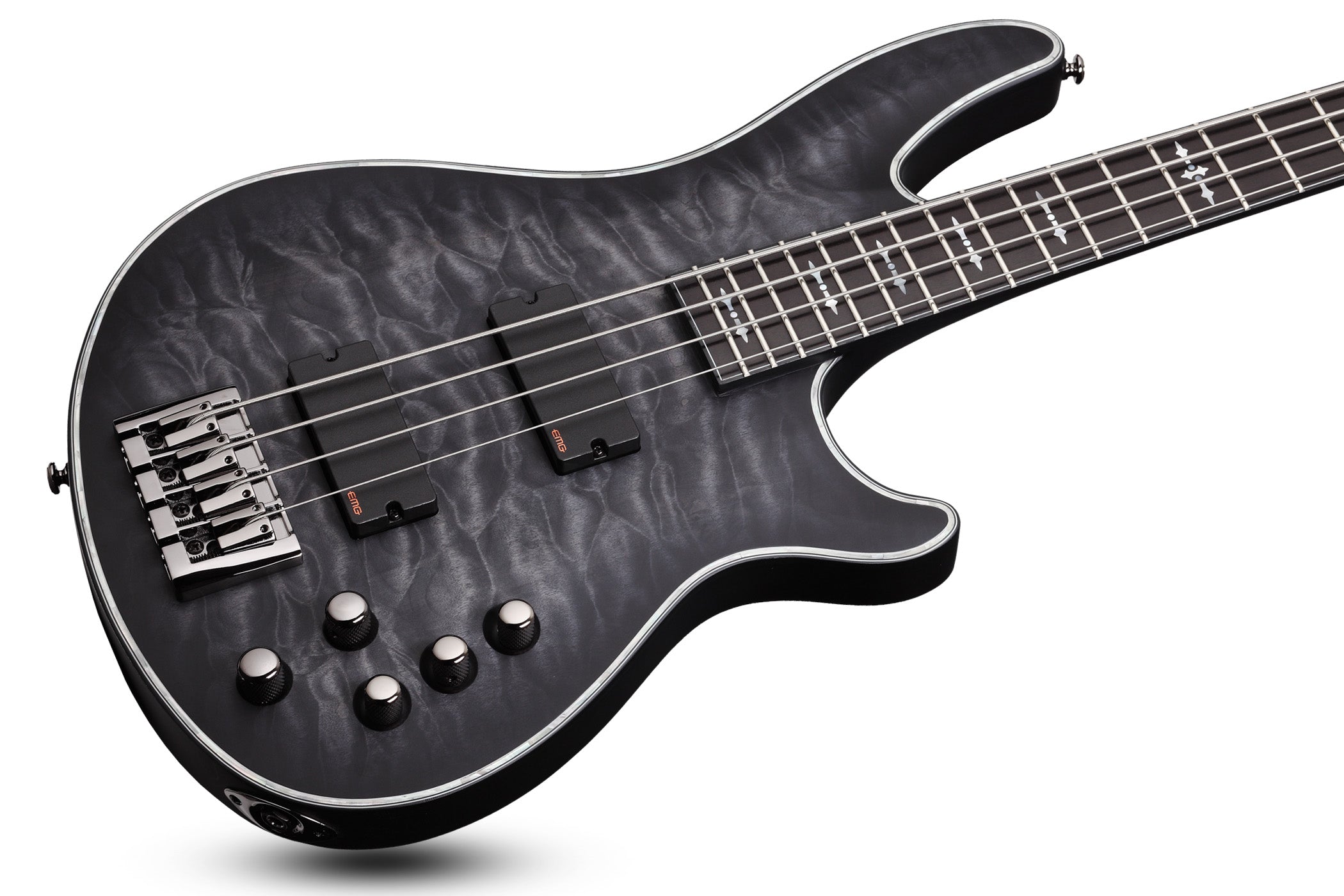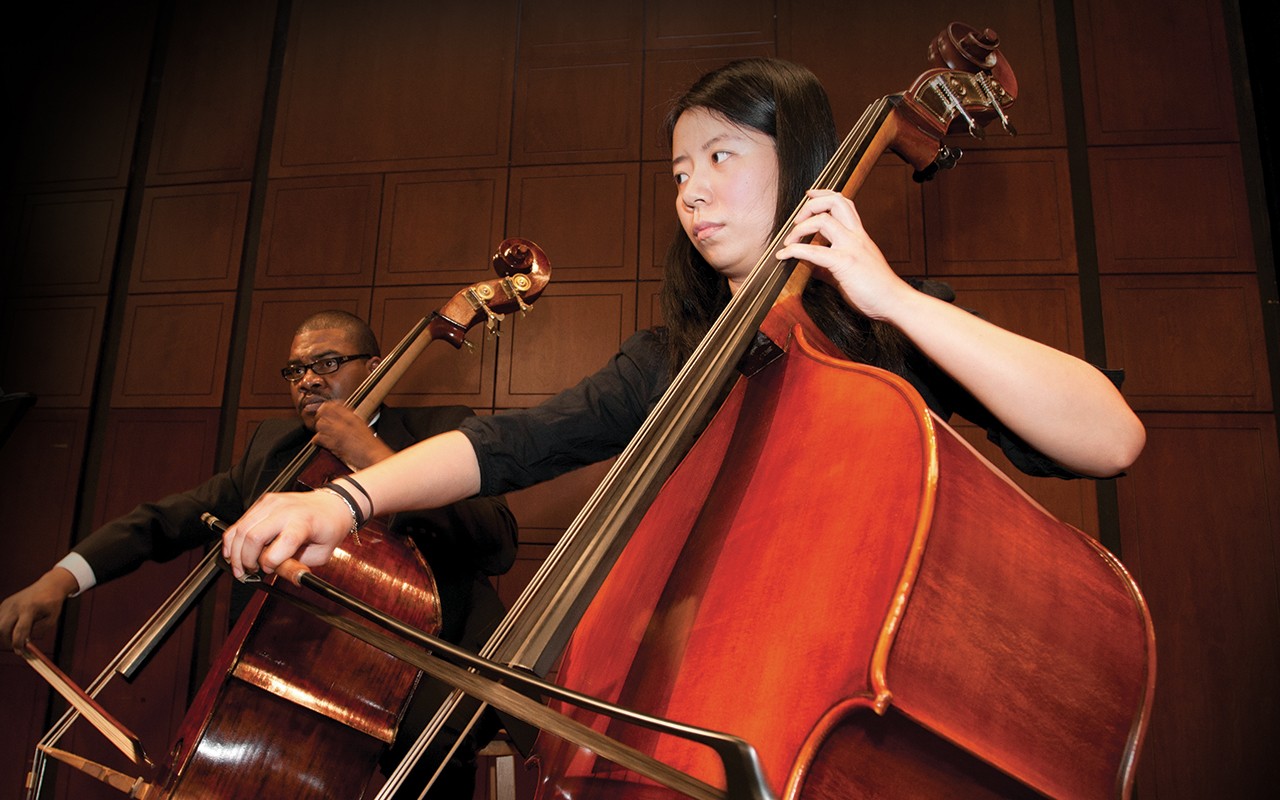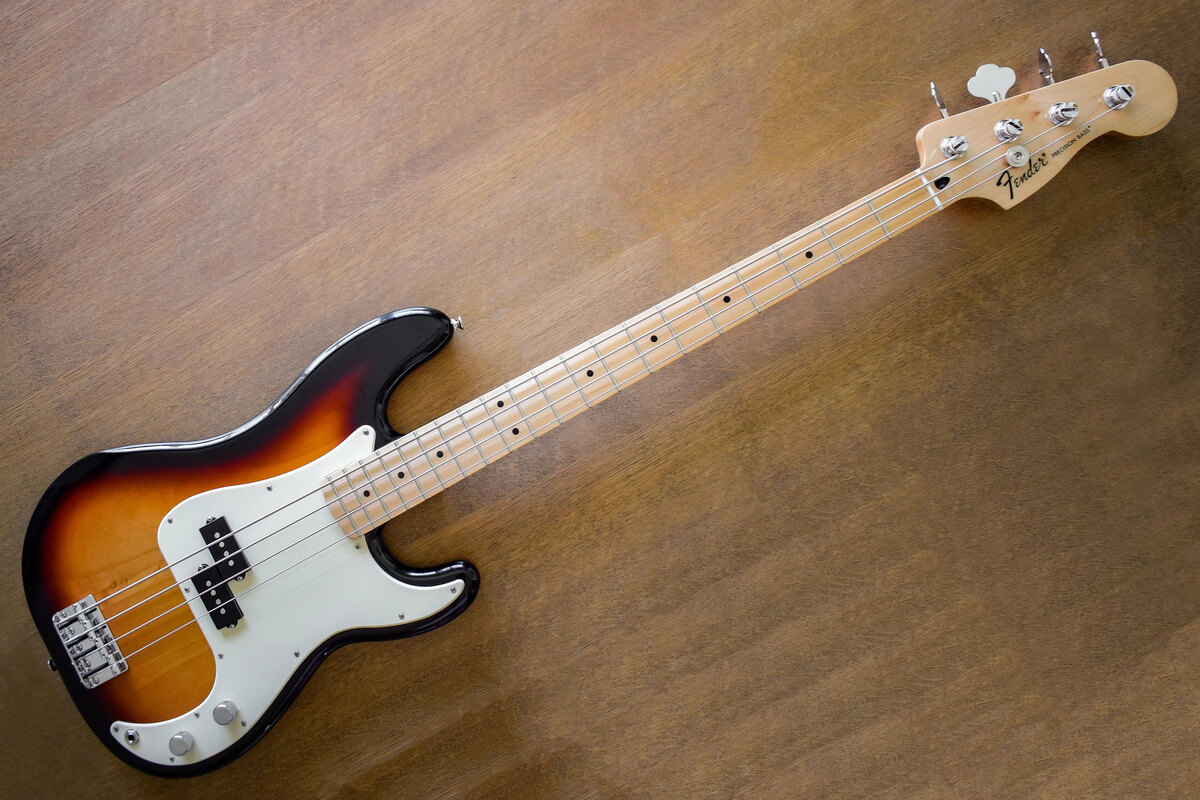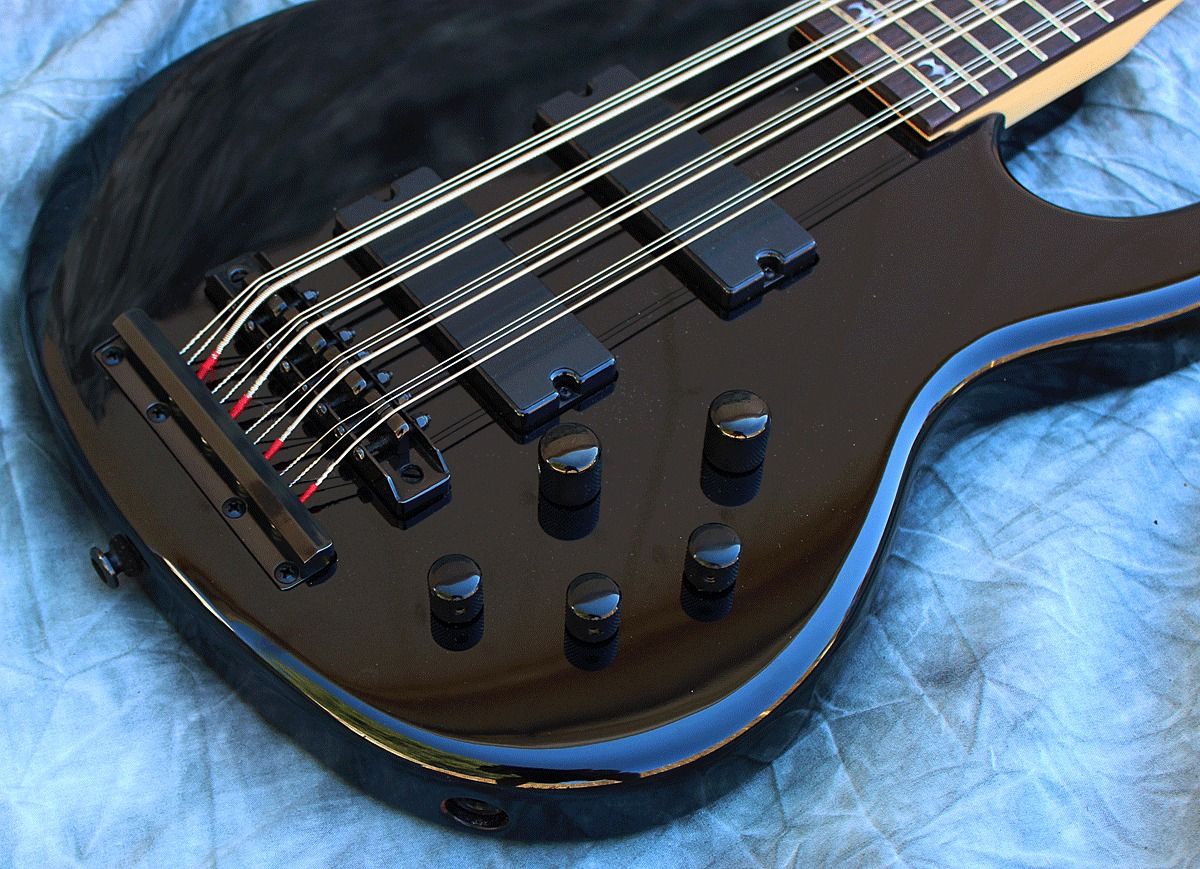Home>Instruments>Bass>What Is A Bass Drop
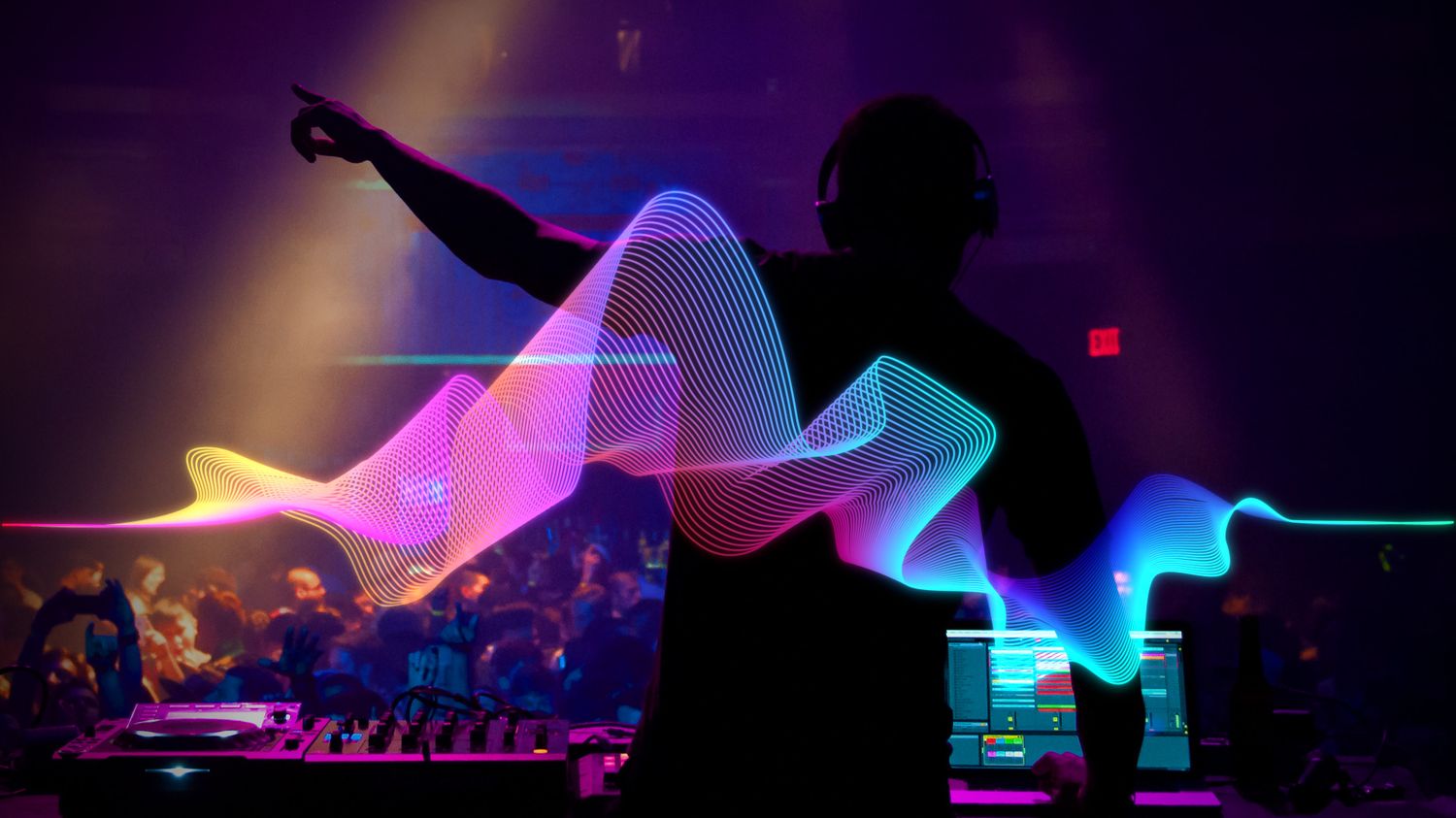

Bass
What Is A Bass Drop
Modified: January 22, 2024
Discover the thrilling power of a bass drop and learn how it adds depth and intensity to music. Explore the artistry and impact of bass in various genres.
(Many of the links in this article redirect to a specific reviewed product. Your purchase of these products through affiliate links helps to generate commission for AudioLover.com, at no extra cost. Learn more)
Table of Contents
Introduction
Music is a powerful form of art that has the ability to evoke emotions and create memorable moments. When it comes to creating impact and intensity, one of the most effective techniques used is the “bass drop.” A bass drop is a moment in a song where the low-frequency bass line dramatically increases in volume and intensity. This sudden and powerful surge of bass has become a signature element in various music genres, from electronic dance music to hip-hop and rock.
The bass drop serves as a climactic point in a song, building anticipation and delivering a satisfying release of energy. It captivates listeners and creates a visceral experience that can make hearts race, bodies move, and crowds erupt in excitement. But what exactly is a bass drop, and how does it work?
In this article, we will explore the definition of a bass drop, its origins, and its impact on both the music and the listener. We will also delve into the techniques used to create bass drops and highlight some famous examples throughout music history. Lastly, we will examine how bass drops have evolved in different genres, showcasing their versatility and continued relevance in modern music.
Definition of a Bass Drop
A bass drop can be described as a sudden increase in the volume and intensity of the low-frequency bass line in a song. It is a dynamic moment that grabs the listener’s attention and creates a powerful impact. The bass drop typically occurs after a build-up or a suspenseful section, and it often marks the climax or drop of a song.
When a bass drop happens, the bass frequencies become more prominent, filling the sonic space and creating a deep, resonating sound that can be felt as much as it is heard. The sudden surge of bass produces a physical and emotional response, eliciting excitement, adrenaline, and a sense of anticipation.
While the term “bass drop” originated in electronic dance music (EDM), it has expanded to other genres, including hip-hop, dubstep, trap, and even rock. The essential characteristic of a bass drop remains the same across different genres: the impactful increase in bass volume that creates a moment of intensity and release.
It’s important to note that a bass drop is not just a random increase in bass levels. It is a carefully constructed element of a song, strategically placed to maximize its impact. A well-executed bass drop can elevate the overall composition, enhance the mood, and leave a lasting impression on the listener.
Now that we have a clearer understanding of what a bass drop is, let’s explore its origins and how it has become a staple in modern music.
The Origins of Bass Drops
The origins of bass drops can be traced back to the early days of electronic dance music, specifically in the 1980s and 1990s. During this time, producers and DJs began experimenting with new sound technologies and techniques to create unique and captivating musical experiences.
One of the key pioneers in the development of bass drops was the rave culture that emerged in the late 1980s. Raves were large-scale, underground parties where electronic dance music took center stage. DJs played a crucial role in creating the intense and euphoric atmosphere of these events, and they started utilizing bass drops as a way to heighten the energy on the dancefloor.
As the rave scene grew in popularity, so did the use of bass drops. They became an essential tool for DJs to create moments of anticipation, surprise, and release in their sets. The deliberate increase in bass volume could instantly transform the mood of a crowd, taking them on a sonic journey filled with peaks and valleys of energy.
With the rise of electronic dance music genres such as techno, house, and drum and bass, bass drops became more prevalent and refined. Producers began utilizing intricate sound design and production techniques to create bass drops that were not only impactful but also sonically captivating.
Furthermore, the emergence of dubstep in the early 2000s played a significant role in popularizing bass drops. Dubstep, a genre characterized by heavy basslines and syncopated rhythms, pushed the boundaries of what was possible with bass drops. Producers like Skream, Benga, and Rusko incorporated massive drops into their tracks, taking the intensity and impact of bass drops to new heights.
Since then, bass drops have transcended the electronic music scene and have made their way into other genres. Hip-hop artists started incorporating bass drops into their beats to add depth and intensity. In rock music, bands like Muse and Royal Blood have experimented with incorporating bass drops into their compositions, creating a fusion of rock and electronic elements.
The origins of bass drops in electronic dance music and the subsequent evolution into other genres showcase the transformative power of this technique. It has become a universal element of music that excites and captivates listeners, regardless of the genre they prefer.
Now that we understand the origins and evolution of bass drops, let’s explore how they are used in music and their impact on the listener.
How Bass Drops are Used in Music
Bass drops are used in music to create moments of intensity, impact, and release. They serve as a powerful tool for composers, producers, and DJs to manipulate emotions and engage listeners on a deeper level.
One of the primary purposes of a bass drop is to build anticipation. When a song reaches a point where the energy is at its peak and the listener is fully immersed, a bass drop can be used to elevate the experience even further. It acts as a sonic punch, catching the audience off guard and heightening their senses.
Bass drops also create a sense of tension and release. The build-up before the drop, often characterized by a progressive increase in energy and complexity, sets the stage for an explosive moment. When the bass drop finally hits, it provides a cathartic release, satisfying the listener’s anticipation and creating a surge of adrenaline.
In addition to their impact on emotions, bass drops also serve a functional purpose in music. They provide a clear transition point within a song, marking a shift in dynamics, mood, or section. This can be particularly effective in DJ sets, where a well-timed bass drop can signal the start of a new track or keep the energy flowing seamlessly between songs.
Furthermore, bass drops are often used to enhance the overall composition and arrangement of a song. They can introduce a new element, such as a catchy bassline or a unique sound texture, that adds depth and complexity to the musical landscape. This helps maintain the listener’s interest and can make a song more memorable and impactful.
While bass drops are commonly associated with electronic dance music, they have found their way into various genres. In hip-hop, for example, bass drops are used to create powerful hooks that drive the rhythm of a song and add a sense of impact to the beats. In rock music, a bass drop can provide a moment of contrast and surprise, adding a dynamic element to the heavier guitar-driven sound.
Ultimately, the use of bass drops in music is a creative choice that depends on the artist’s vision and the desired impact on the listener. A well-executed bass drop has the power to create excitement, elevate a song to new heights, and leave a lasting impression on the audience.
Now that we have explored how bass drops are used in music, let’s delve into the impact they have on the listener.
The Impact of Bass Drops on the Listener
Bass drops have a profound impact on the listener, transcending the realm of mere auditory stimulation. They engage multiple senses and create a heightened emotional and physical experience. Here are some key ways in which bass drops impact the listener:
1. Emotional Intensity: The sudden surge of bass volume in a drop can evoke a wide range of emotions, from excitement and euphoria to anticipation and awe. It triggers an instinctive response within the listener, tapping into their primal instincts and creating a deeply immersive experience.
2. Physical Response: Bass drops have a visceral effect on the listener, resonating through their body and creating a physical connection to the music. The low-frequency vibrations reverberate in the chest and can make the heart race, intensifying the overall sensory experience.
3. Heightened Attention: When a bass drop occurs, it demands the listener’s full attention. The sudden increase in intensity grabs hold of their focus, momentarily suspending any other distractions or thoughts. This heightened level of attention allows the listener to become fully absorbed in the music.
4. Energy Release: A well-executed bass drop provides a cathartic release of energy for the listener. It can be compared to the feeling of a roller coaster reaching its highest point before plunging downwards. The drop releases built-up tension and creates a rush of excitement and satisfaction.
5. Musical Memory: Bass drops are memorable moments in a song that stick with the listener long after the music stops playing. They create an imprint in the listener’s musical memory, associating certain songs or genres with the impactful experience of a bass drop.
6. Connection and Unity: Bass drops have the power to create a sense of unity among listeners. In live music settings, whether it’s at a concert or a club, the shared experience of a bass drop can bring people together, fostering a sense of camaraderie and connectedness through the collective energy.
The impact of bass drops on the listener is not limited to a specific genre or demographic. Its ability to evoke emotions, create physical sensations, and enhance the overall musical experience makes it a powerful tool that resonates with a diverse range of listeners.
Now that we understand the impact of bass drops on the listener, let’s dive into the techniques used to create these impactful moments.
Techniques for Creating a Bass Drop
Creating a captivating bass drop requires a combination of creative thinking, technical skills, and an understanding of musical dynamics. Here are some key techniques used by producers and DJs to craft powerful and memorable bass drops:
1. Build-up and Release: A well-designed build-up is crucial to setting the stage for a bass drop. It involves gradually increasing the energy, tension, and complexity of the music leading up to the drop. This can be achieved through various means, such as layering sounds, adding effects, or manipulating the arrangement. The goal is to create anticipation and prepare the listener for the impactful release of the bass drop.
2. Sound Design: The sound design of the bass itself plays a significant role in the effectiveness of a bass drop. Producers often use synthesizers, samplers, or bass instruments to create a distinctive and powerful bass sound. The sound can be further enhanced through the utilization of effects like distortion, saturation, and modulation to add depth, texture, and character to the bassline.
3. Dynamics and Contrast: Contrast is key when it comes to crafting a memorable bass drop. By creating a stark contrast between the build-up and the drop, the impact of the bass becomes even more pronounced. This can be achieved through sudden changes in volume, intensity, or arrangement. Consider incorporating moments of silence or minimal instrumentation leading up to the drop, emphasizing the impact when the bass finally hits.
4. Arrangement and Composition: Structure and composition are essential in creating a cohesive and effective bass drop. Careful attention should be paid to timing and placement within the song to ensure that the drop feels like a natural progression. Experimenting with different arrangements, chord progressions, and melodies can also help to enhance the overall impact and memorability of the bass drop.
5. Surprise Elements: Adding unexpected elements to a bass drop can elevate its impact. This could include incorporating vocal samples, distinctive sound effects, or sudden changes in rhythm. These surprise elements disrupt the listener’s expectations, heightening the element of surprise and intensifying the overall impact of the drop.
6. Mixing and Mastering: Proper mixing and mastering are essential for ensuring that the bass drop is not only impactful but also balanced and clear. Attention should be given to the frequency balance, stereo imaging, and overall dynamic range to optimize the impact of the bass drop without overpowering other elements of the mix.
It’s important to note that there is no one-size-fits-all approach to creating a bass drop. Different techniques and approaches can yield different results depending on the musical style, context, and desired effect. Experimentation, creativity, and a willingness to push boundaries are key to crafting unique and impactful bass drops.
Now that we are familiar with the techniques used to create bass drops, let’s explore some famous examples throughout music history.
Famous Examples of Bass Drops
Bass drops have become iconic moments in various genres of music, leaving a lasting impression on listeners. Here are some famous examples throughout music history:
1. “Smells Like Teen Spirit” by Nirvana: The grunge anthem released in 1991 features a powerful bass drop during the explosive chorus. The contrast between the subdued verses and the punchy, distorted bassline in the chorus creates a memorable and impactful moment.
2. “Scary Monsters and Nice Sprites” by Skrillex: This dubstep track, released in 2010, is known for its heavy bass drops that have become synonymous with the genre. The track is characterized by a series of jaw-dropping drops that propelled Skrillex to the forefront of EDM.
3. “Insomnia” by Faithless: Released in 1995, “Insomnia” incorporates a powerful bassline and an iconic drop that became a staple in the world of electronic music. The energetic bass drop perfectly captures the emotion and intensity of the track, making it a beloved anthem for dance music enthusiasts.
4. “Black Skinhead” by Kanye West: This hip-hop track off Kanye West’s album “Yeezus” features a dynamic bass drop that adds a surge of energy to the aggressive and industrial soundscape. The drop serves as a climactic moment in the song, intensifying the overall impact.
5. “One” by Swedish House Mafia: This progressive house track released in 2010 builds up to a massive and anthemic bass drop that became a defining moment in festival sets around the world. The drop showcases the power of a well-crafted build-up leading to an explosive release.
6. “Rock You Like a Hurricane” by Scorpions: This classic rock song released in 1984 features a notable bass drop after the guitar solo. The drop adds a thunderous punch to the song, amplifying the energy and showcasing the power of a well-timed bass drop in a rock context.
These are just a few examples of memorable bass drops throughout music history. Each of these drops has left an indelible mark on the listener, demonstrating the power and effectiveness of this technique in different genres and musical styles.
Now that we have explored some famous examples, let’s take a look at how bass drops have evolved in different genres over time.
The Evolution of Bass Drops in Different Genres
The evolution of bass drops in different genres demonstrates the versatility and adaptability of this technique. As music styles have evolved over time, so have the ways in which bass drops are incorporated. Let’s explore how bass drops have evolved in some key genres:
1. Electronic Dance Music (EDM): Bass drops have long been a fundamental element of EDM. The genre’s roots in rave culture and its focus on creating intense and euphoric moments have made bass drops a foundational component. EDM has pushed the boundaries of bass drops, incorporating complex sound design, explosive drops, and creative build-ups to elevate the energy and create thrilling experiences on the dancefloor.
2. Hip-Hop: In hip-hop, bass drops serve as powerful hooks and rhythmic anchors. From the iconic bass drops in songs like “Hypnotize” by The Notorious B.I.G. to the infectious drop in Kendrick Lamar’s “Humble,” hip-hop utilizes bass drops to drive the beat and add a sense of impact. The focus on creating a deep and impactful low-end has led to innovative production techniques and the integration of bass drops as a key component of the genre’s sonic identity.
3. Dubstep and EDM Subgenres: Dubstep emerged as a genre in the early 2000s and became famous for its heavy bass drops. Artists like Skream, Benga, and Rusko pioneered the “wobble” bass sound, characterized by intense and distorted drops that pushed the boundaries of what was possible with bass frequencies. This led to the development of various EDM subgenres, such as trap, future bass, and bass house, each putting its unique spin on bass drops and incorporating them in different ways.
4. Rock and Metal: While bass drops are not as prevalent in rock and metal as in electronic genres, they have made their mark in certain songs and subgenres. Bands like Muse and Royal Blood have incorporated bass drops into their compositions to add a dynamic element and enhance the heaviness of their sound. These drops often act as a surprise element within the instrumentation, unleashing a powerful surge of energy that amplifies the impact of the music.
5. Pop Music: In the world of pop music, bass drops have become a popular production technique to add impact and create memorable moments. Whether it’s a subtle drop during the chorus or a massive drop in the bridge, pop artists and producers use bass drops to create a sonic hook that captures the listener’s attention and amplifies the emotional impact of the song.
The evolution of bass drops across different genres showcases how this technique has evolved and adapted to suit the unique characteristics and goals of each musical style. From the explosive drops in EDM to the rhythmic anchors in hip-hop, bass drops have become a universal element that adds excitement and intensity to music, transcending genre boundaries.
Now that we’ve explored the evolution of bass drops, let’s summarize our findings.
Conclusion
Bass drops are a powerful and impactful element in music. Originating from the electronic dance music scene, they have evolved and found their way into various genres, becoming a universal tool for creating intense and memorable moments. Bass drops build anticipation, create emotional and physical responses, and serve as climactic peaks in songs.
Through careful build-ups, dynamic contrast, and innovative sound design, producers and artists have harnessed the potential of bass drops to captivate listeners and enhance the overall musical experience. From the explosive drops in EDM to the rhythmic anchors in hip-hop and the surprising bursts of energy in rock, bass drops have proven to be versatile and adaptable across genres.
The impact of bass drops on the listener is undeniable. They evoke emotions, provide a release of energy, and create a sense of unity among listeners. Bass drops leave a lasting impression, becoming memorable moments that elevate songs and connect with audiences on a deeper level.
As music continues to evolve, so will the ways in which bass drops are used. Producers and artists will continue to push creative boundaries, experimenting with innovative techniques and exploring new sonic territories to create even more impactful bass drops.
In conclusion, bass drops are a dynamic and essential element of modern music. Their ability to captivate, evoke emotion, and create powerful moments is a testament to the artistry and ingenuity of music creators. So, the next time you feel the ground shake and your heart race with the surge of a bass drop, embrace the intensity and let the music take you on a thrilling sonic journey.



